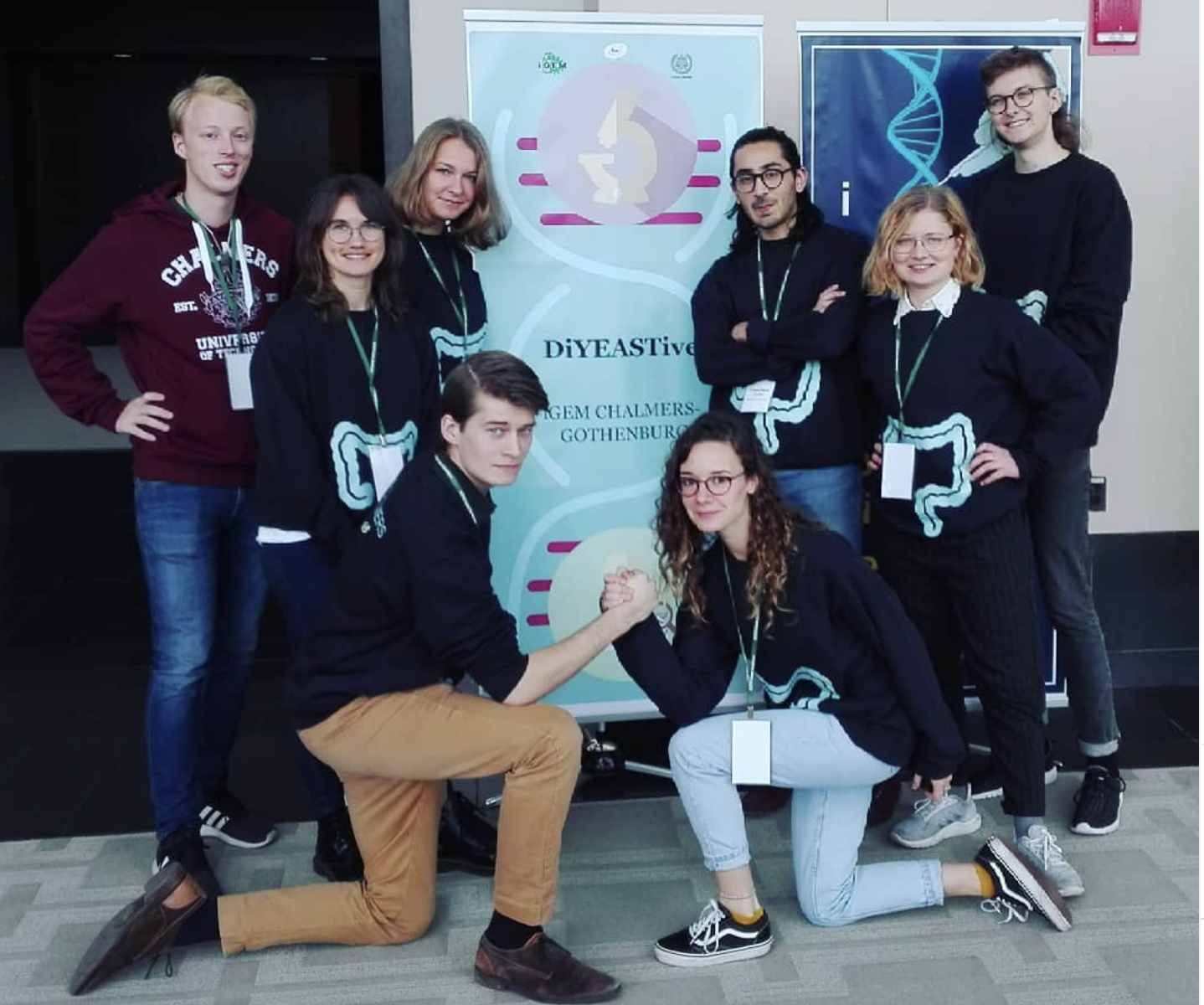Previous Teams
Chalmers University of Technology has been participating in the iGEM competition since 2014. Visit our Wikis throughout the years!

The team developed plasmid-based systems using CRISPR/Cas9, CRISPR/Cas13, and sRNA to silence antibiotic resistance genes and combat antimicrobial resistance (AMR).

The team developed "SoDoVi," a modified sourdough starter designed to produce vitamins A and B12 during bread fermentation, aiming to address dietary deficiencies without relying on animal products or synthetic supplements.

The team aimed to develop a point-of-care test for schistosomiasis by designing systems that produce visual indicators upon detecting the parasite's DNA, facilitating rapid and accurate diagnosis.

This project involved engineering cells to produce fatty acids sustainably, offering an alternative to palm oil extraction and contributing to reduced deforestation.

Addressing textile waste, the team engineered E. coli to express enzymes capable of degrading elastane fibers, enhancing the recyclability of blended fabrics.

The project focused on bioremediation by engineering yeast to degrade polychlorinated biphenyls (PCBs), persistent environmental pollutants, using bacterial genes.

The team engineered Saccharomyces boulardii to bind to cancer cells, produce ultrasound-detectable gas vesicles for imaging, and synthesize therapeutic agents upon detection.

The team developed "BREATHtaking," a yeast-based biosensor designed to detect lung cancer by analyzing exhaled air for specific volatile organic compounds (VOCs).

The team aimed to create a self-sustaining microbial co-culture where a photosynthetic cyanobacterium provides carbon substrates to a production organism, facilitating the conversion of sunlight and carbon dioxide into valuable chemical products.

The project focused on developing a novel strategy to detect and combat contaminations in continuous bioreactors using Saccharomyces cerevisiae as the production organism.

The team created a system in Saccharomyces cerevisiae that expresses different fluorescent proteins based on the number of cell divisions, facilitating automated tracking of cell generations.
